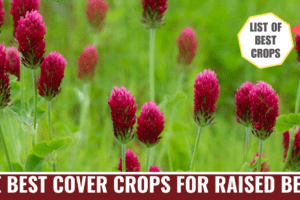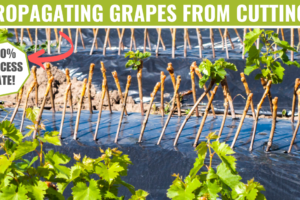Disclaimer: This blog post contains affiliate links. If you make a purchase through these links, I may earn a small commission at no additional cost to you. Learn More. Thank you for supporting our garden community.
How to Plant, Grow, and Care for Gay Paree Peony
Last Updated: September 2, 2024
Are you in pursuit of a show-stopping addition to your garden that exudes both classic elegance and unique charm? Look no further than the Gay Paree peony, a variety that captures hearts with its exquisite bicolor blooms. Gardeners often find themselves yearning to bring more vibrancy and diversity to their flower beds, and this eye-catching peony may just be the floral masterpiece you seek. But how do you ensure that this beautiful plant thrives in your care? In this guide, we’ll delve into everything you need to cultivate the Gay Paree peony, transforming your garden into a tapestry of pink and cream splendor.

How to Plant, Grow, and Care for Gay Paree Peony
In this blog post, you will learn about the storied history and unique characteristics of the Gay Paree peony, a stunning garden plant. You will gain in-depth knowledge on the ideal growing conditions, planting techniques, and maintenance tips to successfully cultivate these vibrant peonies in your own garden.
Additionally, you’ll find expert advice on troubleshooting common issues such as pests and diseases to ensure your peonies flourish. Finally, this post provides creative landscaping ideas to showcase Gay Paree peonies and invites you to engage and share your own gardening experiences.

Gay Paree Peony for Sale
The Gay Paree peony variety is sold at various in-person and online plant nurseries. Although, it is a somewhat rare variety, making it difficult to come across.
Peonies are sold as either potted plants, or as individual root divisions.
Thankfully, Blooming Bulb carries ready-to-plant peony root divisions. These root divisions are similar to bulbs, in the sense that they are planted in the fall and come up in the spring.
You can pick up your own Gay Paree peony root divisions to plant right now in the fall at Bloomin Bulb.com.
Along with peony roots, Blooming Bulb also carries other ornamental plants that grow from bulbs (obviously). Check them out to learn more!

History of Gay Paree Peony
The Gay Paree peony is not just another flower; it’s a living piece of art with a rich history that captivates gardening enthusiasts and historians alike.
Originating from the lush landscapes of Europe and Asia, peonies have been cultivated for over a thousand years for their beauty and medicinal properties. The Gay Paree variant, however, was introduced in 1933, capturing hearts with its distinctive bicolor petals.
Esteemed for its robust growth and breathtaking blooms, the Gay Paree quickly became a sought-after gem within botanical circles and home gardens, symbolizing prosperity and elegance. This variety, with its deep-rooted cultural significance and unparalleled aesthetic appeal, continues to be a focal point in modern horticulture discussions, serving as a bridge between the past and present of peony cultivation.
As for the origin of its name, “Gay Paree” is an old English term that means something like joyous Paris. It uses the French pronunciation of Paris, which is roughly “Paree”, as well as the English word “gay”, which means “happy and carefree.”
This name has been applied to this peony variety because of its colorful nature, having both pink and cream-white flowers, possibly lifting spirits in joy.
Ideal Growing Conditions for Gay Paree Peony
Ensure your Gay Paree peonies flourish with our tips on sunlight, soil preferences, and proper watering techniques. Understanding these essential factors is key to optimizing the health and vibrancy of your blooms.
- These plants grow best in USDA hardiness zones 3-7. These zones provide the Gay Paree peonies with the correct amount of sunlight and chill hours needed for optimal growth.
- Generally, peonies grow best in full sunlight and well-drained soil. An ideal pH range is between 6.5 and 7.5. Make sure also that the soil is very rich in organic matter, such as compost or manure.
This variety grows to about 2 feet tall at maturity. Because it is a herbaceous peony (as opposed to tree peonies), all the foliage dies back in the fall and regrows in the spring.

Planting and Cultivating Your Peonies
From selecting the perfect spot to caring for your plants throughout the seasons, we’ve compiled all the advice you need to grow thriving Gay Paree peonies. Our easy-to-follow guide will take you from planting to peak blooming:
- Choosing the Right Location: As said previously, full sun is the best for growing peonies. Additionally, choose a location that has well-draining soil and that is fairly neutral regarding the pH.
- Planting Your Peony: Peonies are best planted at a depth of 2-3 inches. Ensure the eyes (small red buds) are pointing up, as these are the growing points that will sprout next year. Each root divisions should be spaced approximately 3 feet apart; these plant spread!
- Ongoing Care: In zones with very cold winters, mulching is necessary to protect the roots from freezing. Peonies only start blooming 2-3 years after planting from root divisions. But luckily, blooms increase each year as the Gay Paree peony plants mature.
- Fertilizing: I generally don’t fertilizer peonies, other than a good helping of organic matter. But if you want, use a balanced organic bulb fertilizer in early spring and again in late spring / early summer (when the plants start to flower).
Solving Common Peony Problems
Even the most seasoned gardeners face pitfalls. We’ll tackle common issues such as disease and pests and offer solutions to keep your Gay Paree peonies in optimal health.
In general, peonies are quite resistant to many common garden pests and diseases. However, there are a few that may attack your plants.
Aphids and thrips may cause damage to your Gay Paree peonies. These pests suck out the innards of the plant leaves and leave them lifeless.
Additionally, powdery mildew can also call your peonies home. This is because peony plants typically grow many leaves that are densely packed. This will increase the overall humidity around the plants, leading to more powdery mildew.
Designing with Gay Paree Peonies
Your Gay Paree peonies can transform any garden space.
Their beautiful bicolored flowers allow for pairing with any other plant that has pink or white flowers. These include low-growing hydrangeas, low-growing roses, and tulips.
These plants will add variety to your landscape, allowing your Gay Paree peonies to truly shine.
And because these peonies bloom for only 7-10 days, it is also good to plant other peony varieties that continuing blooming after the Gay Paree peonies are done. Consider other early, mid, and late blooming peony varieties. Check out Blooming Bulb.com to learn more!
Discussion Questions
Have you ever grown Gay Paree peonies in your garden, or are you considering adding them this season? What tips and tricks have you discovered for cultivating perfect peonies? Share your stories in the comments below to join our community of passionate gardeners!
Frequently Asked Questions
Gay Paree peony plants are very long-lived and can thrive for 50 years or more with proper care. They tend to become more prolific bloomers as they age.
Divide Gay Paree peonies in the fall by digging up the root clumps, gently separating them into smaller sections with at least three to five eyes each, and replanting them.
Absolutely, Gay Paree peonies make excellent cut flowers. Cut the stems when the buds are still fairly tight for the longest vase life.
The large blooms of Gay Paree peonies can cause the stems to droop, especially after rain; staking or using peony rings can provide necessary support.
Even More Gardening Ideas
Here are a few more posts to get the ball rolling in your garden!
- 30 Yellow Flowering Herbs You Need to Grow
- Comprehensive Guide to Planting Brassicas for Fall
- 20 Fast Growing Vegetables to Plant in September
Products
For all-purpose organic fertilizers, check out Fishnure.
To buy organic, non-GMO lavender seeds, check out SeedsNow.
For a wide selection of perennial garden plants, check out Nature Hills Nursery.
For gardening equipment, check out Bootstrap Farmer
The “Gay Paree” peony stands out as a striking and resilient addition to any garden, bringing a touch of Parisian elegance with its vibrant and aromatic blooms. Planting, growing, and caring for these magnificent flowers is a rewarding endeavor that offers a stunning display of color from late spring to early summer.
By following the simple guidelines outlined for proper planting, ensuring adequate sunlight and well-drained soil, providing the right care through consistent watering and fertilization, and employing preventative measures against pests and diseases, you can enjoy your “Gay Paree” peonies for decades.
Experience the joy of growing Gay Paree peonies and witness your garden becoming the talk of the neighborhood. Share your experiences below, pass this guide to fellow garden enthusiasts, and sign up for our newsletter for more expert gardening advice.
If you want to learn more about gardening, foraging, nature, and sustainability, check out The Real Gardener on Instagram, YouTube, LinkedIn, and Pinterest.
Pin this post for later:








Leave a Reply